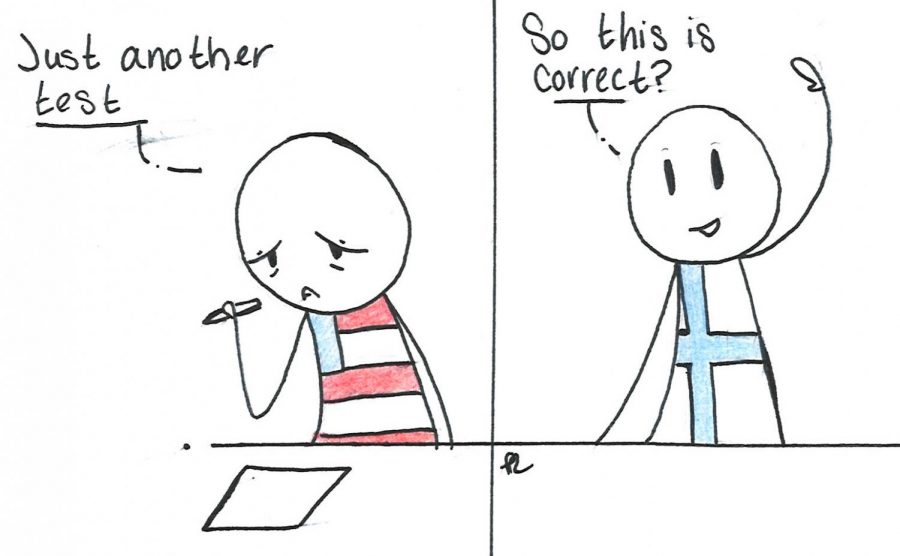United States education system should learn from other countries.
September 19, 2019
From the age of 6 to 18, test scores have defined academic intelligence for both state and country. Many can relate to being ecstatic to disappointed when it comes to their scores, but what if the scores had more to do with the way classes are taught rather than student intelligence?
the age of 6 to 18, test scores have defined academic intelligence for both state and country. Many can relate to being ecstatic to disappointed when it comes to their scores, but what if the scores had more to do with the way classes are taught rather than student intelligence?
According to factmaps.com, the USA as of 2019 has been ranked 39th in mathematics, 25th in science, and 24th in reading out of a total of 70 participating countries. The top ten countries (with a combined average of all math, science, and reading scores) are Singapore, Hong Kong, Japan, Macau, Estonia, Canada, Taiwan, Finland, South Korea, and China.
Unlike the U.S., many other countries don’t follow a grade or test structure format to identify academic success and failure nor define “learning” by a number on a piece of paper or computer.
Medium.com says while tests are a great measure of testing understanding, they only aid learning if students actually go back and fix the mistakes made on them. Some teachers ask students to correct tests, and others even give extra credit for doing so, but the vast majority of completed tests find their way into a recycling bin. Then, after a test, the teacher moves on to the next concept, building on the material just tested.
Somehow, the student who finished with an 80% on an exam is expected to understand new material based on concepts that he or she doesn’t have full understanding of. Hypothetically, this would mean the student would have the same chance of getting a higher score on their next test as one would have of doing a kick flip on a skateboard with only some experience in skateboarding.
Other countries have opened up with new techniques to approaching learning that have been beneficial to students understanding and retaining information. According toBusinessInsiders.com, “Finnish students only take one standardized test during their entire primary and secondary schooling. By contrast, the US, driven by No Child Left Behind and Common Core mandates, requires students in third through eighth grade to take annual standardized tests to track their performance.” The Finnish technique prevents students from “teaching to the test” and instead, they learn the subject entirely.
The question arises of how America can change their education system for the benefit of their students. Change in general is tough to adapt to for most, especially when the people who run the system don’t have full perspective or sight into what can be done for the better, as a student who goes to school day to day would. Major changes such as the Finnish education system would be impossible to convert to overnight, let alone convince the parents, students, and teachers who have run with the same technique and schedule their whole life to change all at once.
However, changes that can be made on a minor level are including more short-response on quizzes and tests. Short response answers require students to have learned the information and apply it to the question in their own words, not only increasing their understanding of the subject but further solidifying it in their mind rather than memorizing it. After all, when are students going to be faced with multiple-choice in the real world? Even ROAR, a required period of free-reading for students, is a good step because it benefits students’ education by improving comprehension, vocabulary, and fluency as they’re reading.
Education shouldn’t be a game of win or lose based on a grade scale, and when America stops treating it as such it may have a chance at successfully educating it’s nation.




